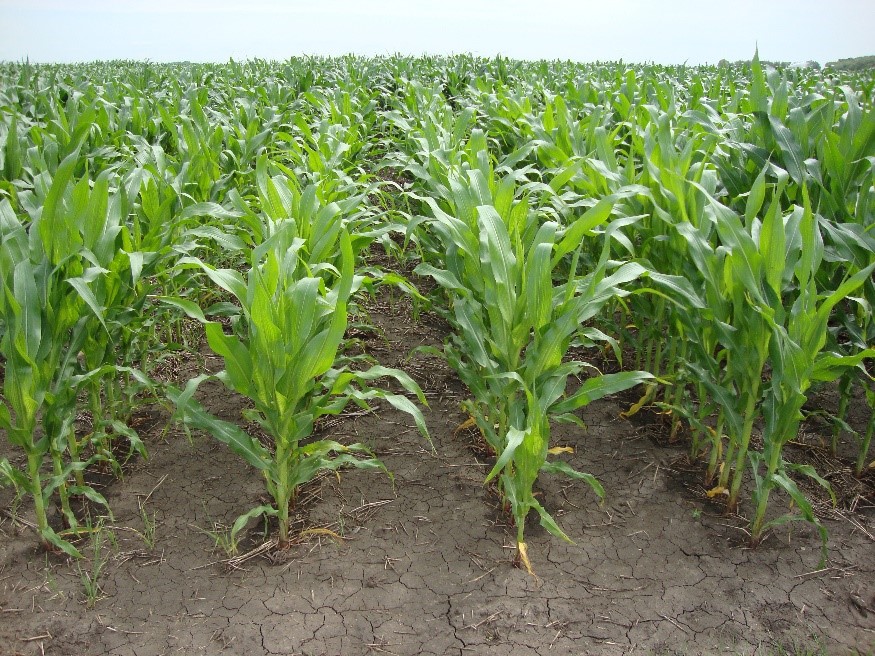Is It Too Late to Correct for Nitrogen Deficiency in Corn?
Several corn fields have been under prolonged or frequent wet conditions where, there has been some N losses to denitrification (plant available nitrogen as nitrate is converted to unavailable nitrogen) and N leaching, depending on location and soil type. Older (lower) corn leaves show yellowing especially on the midribs from nitrogen deficiency.
 Nitrogen deficient corn at the NDSU Carrington Research Extension Center.
Nitrogen deficient corn at the NDSU Carrington Research Extension Center.
Should the North Dakota farmer apply nitrogen fertilizer to correct for N deficiencies in corn, and expect to improve yields and recoup the cost?
Mid-season N is recommended for corn between V5 to V8, but ideally between V5 to V6, when growth and yield response are most likely, and that full recovery of yield potential is expected following correction of the early deficiencies.
Beginning the second week in July, many of the corn fields are already at V8 to V10. Nitrogen applied after V8 can still result in significant yield improvement by increasing kernel size; but other yield components would have already been set. N deficiency can be corrected from V8 to V10 and up to V12 on some higher yielding fields, but with a declining likelihood.
Corn’s greatest need for nitrogen is from the V12 stage to the corn blister stage. Soil type heavily influences the side-dressing decision. High clay soils should have a planned split-application of nitrogen fertilizer due to the risk of nitrogen loss by denitrification. Sandy soils also have high risk of nitrogen loss due to leaching.
Mid-season fertilizer consideration
For medium to sandier texture soils, anhydrous ammonia is probably the best choice to side-dress corn, and UAN for high clay soils. UAN (28%) is a better choice than urea. UAN can be applied with a coulter approximately 2 inches deep, and anhydrous ammonia at 5 to 6 inches deep.
Also consider as the next option, UAN applied as a surface band using orifice nozzles between the rows. Corn injury can be reduced if a stiff hose which drags or nearly drags on the ground is configured to the stream bar.
Urea used for top-dressing on older corn plants can cause fertilizer burn or plant death and the least favorable nitrogen choice. Urea broadcast should be limited to 60 lb N/ac. Fertilizer placed in every other row is sufficient. Slow-release formulations should be avoided.
Additional informantion at: https://www.ag.ndsu.edu/cpr/soils/topdress-and-sidedress-options-for-solid-seeded-and-row-crops-06-06-13
Jasper Teboh, Ph. D.
Jasper.Teboh@ndsu.edu
Soil Scientist


